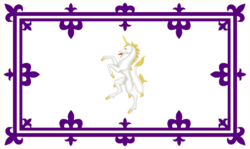Education in Caldia
This article is incomplete because it is pending further input from participants, or it is a work-in-progress by one author. Please comment on this article's talk page to share your input, comments and questions. Note: To contribute to this article, you may need to seek help from the author(s) of this page. |
 | |
| Ministry of Education | |
|---|---|
| Minister of Education | Gráinne Ní Cheanndubháin |
| National education budget | |
| Budget | €23.2 billion €2500 per student |
| General details | |
| System type | National |
Education in Caldia is mandatory for all children between age 5 and 17. The compulsory Caldish education system follows a three-tiered model that includes primary (bunscoile), secondary (meánscoile), and tertiary (treascoile) education. Typically, primary education lasts from ages 3-7, secondary from ages 8-12, and tertiary from ages 13-17. After completing ísleoideachas (lower education), a student moves on to completely his or her ardoideachas (higher education). Depending on the path chosen, students can either attend a trade school or university after completing Grade 13. Higher education typically starts at the age of 18. While it is not mandatory, the government strongly encourages students to pursue ardoideachas. Small tuition fees are charged for trade schools, universities, as well as pre-schools.
The school year begins on the third Monday of January and ends on 30 November. Should 30 November fall on a Saturday or Sunday, the school year ends on the last weekday of November. There is a school holiday for the entire month of June, as well as other school holidays throughout the academic year. The school year is divided into semesters, with the First Semester taking place from January to May and the Second Semester from July to November.
All schools, in both ísleoideachas and ardoideachas, are operated by the state and are part of the Ministry of Education. The annual education budget is over €23.2 billion, with €2500 being spent per capita. Schools are run through the joint efforts of municipalities and the national government. Private schools are prohibited and homeschooling is allowed but is closely supervised by the government and seldom allowed.
Overview
The traditional path for education is as follows:
Pe-school - Réamhscoile
- Ages 1-2
Primary - Bunscoile
- Ages 3-7
- Kindergarten: age 3-4
- Grade 1: age 5
- Grade 2: age 6
- Grade 3: age 7
Secondary - Meánscoile
- Ages 8-12
- Grade 4: age 8
- Grade 5: age 9
- Grade 6: age 10
- Grade 7: age 11
- Grade 8: age 12
Tertiary - Treascoile
- Ages 13-17
- Grade 9: age 13
- Grade 10: age 14
- Grade 11: age 15
- Grade 12: age 16
- Grade 13: age 17
University - Ollscoil
- Ages 18+
- First Year: typically age 18
- Second Year: typically age 19
- Third Year: typically age 20
- Fourth Year (for MA programs only): typically age 21
History
Pre-schools
The government operates pre-schools known as réamhscoile (plural: réamhscoileanna) and has done so since the 1960s. Réamhscoileanna are for children between the ages of one and two. Typically, children are introduced to the alphabet, colours, and a basic vocabulary, usually consisting of words for family members. They are optional, as compulsory education begins at age three. These schools are essentially public daycare centres that allow parents to send their kids to school during the work day. There is a tuition fee charged, but the government and parents share the cost, with the government covering eighty-five percent of the fee. While many réamhscoileanna are located in bunscoileanna (primary schools), they also operate in workplaces such as government and corporate offices or factories.
Ísleoideachas
Primary schools
Secondary schools
Tertiary schools
Alternative education
Ardoideachas
Trade schools
University
3 years for a BA, 1 year for a MA (4 years total)
2 years for PhD.
Comprehensive Schools
Teachers
To enter the profession, prospective teachers are required to obtain their BA and their MA in education, requiring a minimum of four years enrollment at university. Many teachers also acquire a PhD, either before they enter the profession or while teaching. The profession is highly respected and as such entrance to university programs for education is competitive. Candidates are required to maintain good grades and take a substantial course load in order to become a teacher. Teachers may also be expected to obtain additional degrees outside of education. This is common for those who teach specialized subjects in secondary and tertiary schools. Roughly 15% of applicants to university programs successfully complete them. Only 10 universities in Caldia can issue teaching degrees. This includes: the University of Spálgleann, the University of Garrafrauns, the University of Invertwinc, St Adomnán's's University, King's University Scariff, Shanbally University, the Public University of Spálgleann, Clyte University, Queen's University of Cahir, and Tóinderry Public University.
Teachers are highly respected and receive high salaries. This increases the quality of teachers in Caldia and results in high numbers of applicants for open positions. National law requires teachers to unionize. This also contributes to higher salaries and better workplace protections.
Criticism
- LGBT Studies, LGBT History
- "Forced social liberalism, forced multiculturalism"
- Sex education from a young age
- Drug and alcohol safety instruction
- Ban on private schools - religious groups